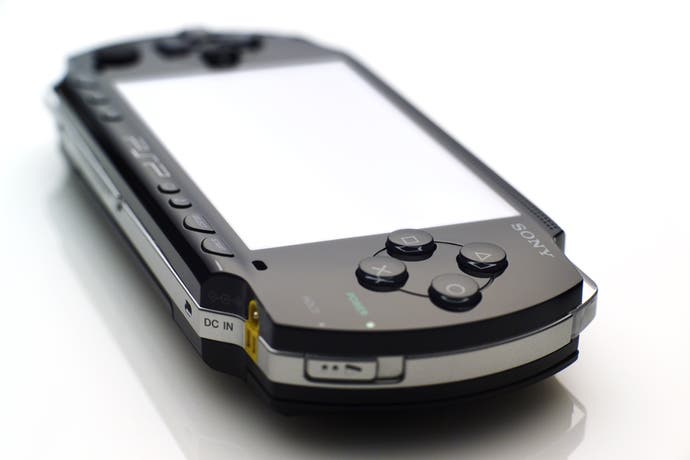PlayStation - The total history
Part 3: The PS2 years and the build-up to the PS3.
One slightly surreal result of the stock shortages were roving packs of reporters on launch night, searching in vain for the sort of broadcast-quality hysteria that was commonplace in the US and Japan. There was a similar sense of anticlimax online, where budding entrepreneurs asked for £1,500 but got about £500 for early units. And the criticism continued after the launch, with online games sites becoming unexpectedly hysterical about the lack of antialiasing and developers continuing to complain about how difficult it was to program.
Interviewed at the time, Sony's Phil Harrison bullishly pointed to the wave of criticism as a reflection of the 'worldwide cultural significance of the introduction of PlayStation 2'. And, of course, he was right. It took 15 months for the first million-copy selling game to appear, but Capcom's Onimusha: Warlords got there in the end - exorcising the memory of underwhelming Japanese launch titles like Tekken Tag Tournament, Street Fighter EX3 and Ridge Racer V.
In any case, from 2001, Sony could count on the unprecedented success of Rockstar's hugely original pop-culture melting pot, gameplay sandbox, GTAIII, and an increasingly diverse portfolio of games. Like the original PlayStation, every sector of the market was covered: from simple puzzle games like Fantavision to sports games such as FIFA and Madden; from high art, like Ico, to Hollywood blockbuster in the shape of Metal Gear Solid 2; and from family friendly titles like Jak and Daxter to fiendishly stylish action games like Devil May Cry; Sony once again had it all covered.

Including the market for innovation: early demonstrations of the console at trade shows frequently saw developers waving wands and swords around to show off the theoretical possibilities engendered by the PlayStation 2's USB connectivity. Over time these gave way to the groundbreaking Eye Toy, which in turn, heralded a wave of similar titles that were pitched at expanding audiences.
In the wake of criticism of the console in the months after it launched, Sony's Phil Harrison declared: "I think there's been a couple of high-profile examples of developers who failed, through their own poor decision making and technology planning, to understand what PlayStation 2 is about." A year or two later, the console's success allowed Ken Kutaragi to be more authoritative: "Last year some of the developers complained about PS2, but this year no one is complaining". Certainly nobody was complaining when the revised slimline PS2 helped the console outsell the original PlayStation.
The company's foray into the handheld market has so far been slightly less successful in terms of market share. Released in Japan at the end of 2004, and in the rest of the world the following year, the PSP expanded the multimedia capabilities of the PS2. Initially announced at E3 in 2003, the device is closer to the PS2 than PSone in terms of performance, which led to widespread expectation that success was a foregone conclusion. Certainly in terms of unit sales, and the quality of software it has been a success, with games like GTA: Liberty City Stories, Lumines, and Ridge Racer, all demonstrating the potential of the hardware. It's just that it's suffered by comparison to the Nintendo DS. Perhaps recently announced plans to make the PSone software library available for download may help it achieve more prominence.

Certainly its ability to connect to the PlayStation 3 should help. In some ways, the PlayStation 3 can be seen to build on Sony's previous experiment with the Playstation 2's multimedia functionality. The multimedia promise that had tongues wagging at the launch of the PS2, didn't ever really materialise, and nor did the episodic gaming that Sony's Phil Harrison often talked about. But while there wasn't much of an online strategy in the UK, both Japan and the US markets were well served by the PlayStation broadband adapter, and, in December 2003 the PSX was launched in Japan.
Consisting of a recordable DVD drive, TV tuner, hard disk, broadband adapter and PS2 chipset, the PSX marked the first use of the Cross Media Bar which now forms the front end for the PSP and PS3. It was available in two flavours (one with a 250Gb hard drive, and one with just 160Gb), which suggests that, while it wasn't launched outside Japan, it did amount to a useful trial run.
Which brings us up to date with the PlayStation 3, launched in Japan on November 11 2006, and in he US, on November 17. Continuing Sony's trend for hefty hardware specifications, its architecture is based around the 3.2 GHz Cell processor, jointly developed with Toshiba and IBM, and the DualShock controller has morphed into the wireless motion-sensing SIXAXIS.
So far, it's been uncannily reminiscent of Sony's earlier launches. There's been hysteria to accompany the US and Japanese launches, a sense of grievance to greet news of delays for Europe, carping about the slightly underwhelming wave of launch software, complaints about price point, and technical teething problems with backward compatibility. But then that's how the PlayStation and PlayStation 2 started life, and look where they ended up: selling over 100 million consoles each.







